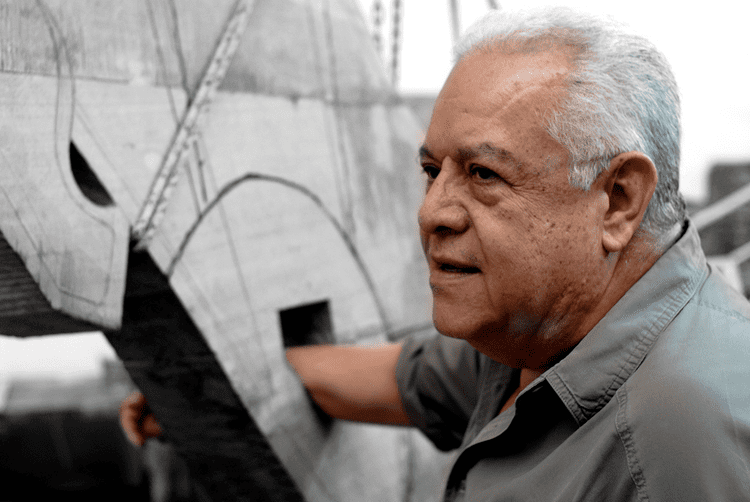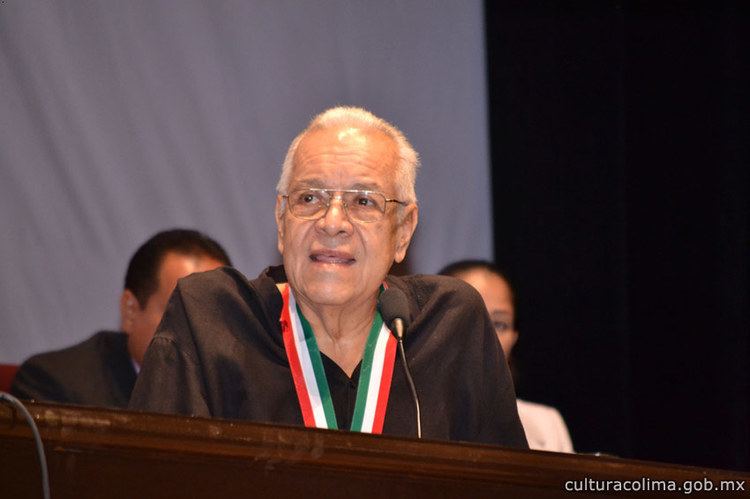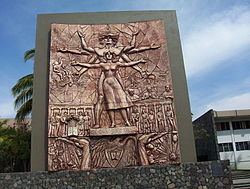Name Rafael Zamarripa | ||
 | ||
Los a os cuentan 2014 historia de vida rafael zamarripa
Rafael Zamarripa Castañeda (born February 8, 1942) is a talented, respected, and accomplished painter, sculptor, designer, dancer and choreographer from Guadalajara, Jalisco, Mexico.
Contents
- Los a os cuentan 2014 historia de vida rafael zamarripa
- Rafael zamarripa web
- Early LifeEducation
- Mexican Folklore Dance
- Career
- Dance
- Art
- AwardsNotability
- References

Rafael zamarripa web
Early Life/Education
Zamarripa was born in 1942 to Francisco ‘Don Panchito’ Zamarripa, a shoemaker, and Maria de Luz Castañeda, who loved to play the piano. He has described them as ‘strict, but loving’. His family, including his six other siblings, was poor, but always had food and clothing. Zamarripa discovered his interest and talent in art at an early age. One of his first art approaches was through puppets. As a kid Zamarripa was amazed by puppets and he eventually started making his own. He would use sticks, paper, and cardboard to make them and he would also dress them with fabric. At the age of eight his parents sent him to work with a santero (sculptor of religious wooden figures). Here, he started practicing his sculpting skills. Around this time Zamarripa would also help his father sell shoes downtown. On his way downtown, he would pass Teatro Degollado, which intrigued him. Returning from downtown, he would linger at the building to play with the stage crew’s children. This was how he gained his first exposure to theater arts, and it fascinated him. This same walk introduced him to the School of Plastic Arts. One day, fatigued from carrying the shoes back after a day downtown, he stopped at the building for help, and was shown classrooms where painting and sculpting classes were held. He enrolled in the school at age fourteen. In this school the music department offered a Mexican folk dance class in the summer, composed primarily of female students who were in need of male dance partners. Zamarripa, along with other students from the art department, joined and he began dancing there with no formal training. When summer classes ended, the dance students wanted to continue dancing on their own, so they formed a local student group that met every Saturday. They practiced regional folk dances, traditional jarabes, and sones, taught to them by two iconic figures in Mexican folkloric dance, María del Refugio García Brambila and Francisco Sanchez Flores.
Mexican Folklore Dance

Danza folklórica mexicana is a choreographed style of dance rooted in regional folk expressions of Mexico, dating back to the Post-Revolutionary period. It contains theatrical elements and is considered a stylized art form, showcasing the cultural diversity of Mexico. The style was cultivated in the 1960s and has risen to prominence in both Mexico and the United States. It is performed across the world.
Career

In 1949, Zamarripa was approached by Amalia Hernández, who developed folkloric dance for theater, and founded Ballet Folklórico de México, after watching him dance with his student group, she invited him to join her company, but he declined because of his ambitions of pursuing a career as a sculptor. She encouraged him to reconsider, and told him it could help his art career; as he would be able to travel and attend art schools he otherwise would not have the opportunity to. He now praises Hernández for fulfilling her promises. Soon after, he joined the Ballet on a trip to Europe, where they placed first at the Festival of Nations in Paris. Upon returning, he started to formalize the dance group, employing the new techniques he learned with Hernández. The group was invited to join a prestigious dance competition, entering as El Grupo de Danza Regional de la Escuela de Artes Plásticas. They brought Zamarripa with them to teach them how to perform on stage. The group placed first regionally in Jalisco, and continued to Mexico City to compete at the national level, where their director allowed them to call themselves El Grupo Folklórico de la Universidad de Guadalajara. The distinguished judges eliminated all but the most talented groups. Zamarripa considers the winners of this competition and the next four to be influential and active pioneers of Mexican folkloric dance from 1964 to the present. When his group returned to Guadalajara, the director realized Zamarripa's potential as a producer and a director, equating his staging abilities with those of Amalia Hernández. A few years later, Zamarripa formed El Grupo Folklórico de Guadalajara, which would define and set the standard for traditional folkloric dance. Today, his paintings and sculptures adorn buildings and parks in Jalisco and Colima. He has been a maestro and choreographer for different folk dance groups in Mexico and the U.S., and has showcased his choreographies all over the world. He is currently the director of the Ballet Folklórico de la Universidad de Colima and he continues to practice his passions of painting, sculpting, teaching and choreographing Mexican folk dance today.
Dance

Zamarripa was able to cultivate his talent under the instruction of the leaders and pioneers of Mexican folk dance. His experiences, techniques, skill, and passion led his founding of several major dance companies including the award-winning Grupo Folklórico de la Universidad de Guadalajara and Ballet Folklórico de la Universidad de Colima. Zamarripa also established the Escuela de Danza at the University of Guadalajara in 1966, becoming its first director. In 1980, he created the Centro de Danza Universitaria at the University of Colima, one of the first universities to offer a bachelor's degree in Mexican folkloric dance. Zamarripa offered original contributions to the Mexican folk dance genre, such as the presentation of Corridos (narrative ballads) on stage, founding of the Raza technique (a quick and efficient teaching method using drums to perfect dancers' footwork), and the creation of the Culebra dance prototype (the Snake Dance). In his shows, he communicates stories contextualized with music and dance in a theatrical setting. He has directed various types of performances, like regional dances from Mexico, Pre-Hispanic dances, ritual dances, indigenous dances, Corridos, and many more. In his choreographies, Zamarripa strives to retain the cultural and historical roots of the dances. He personally manages the scenery, lighting, music, and designs the costumes in a way that preserves the dance’s roots. He has attended many workshops, conferences, and universities in Mexico and the United States to assist folkloric dance groups and offer his expertise. Zamarripa is currently the director of the Ballet Folclórico de la Universidad de Colima, and Chair of the Department of Dance in the Insituto Universitario de Bellas Artes at the University of Colima.
Art

Zamarripa's paintings, sculptures, and designs are thought to be distinct and recognizable, as are his choreographies. He is considered one of Mexico's most prominent contemporary artists. At the age of 18, Zamarripa was hired to sculpt El Niño Sobre el Caballo de Mar, which has become one of the official symbols of the city of Puerto Vallarta. After completing a degree in art and education in Mexico, Zamarripa took advanced art courses in Italy, New Zealand, and Australia. In 2000, Zamarripa completed a series of sketches to be featured in the book Trajes de Danza Mexicana, a collaboration with Xochitl Medina Ortiz. The book, published in 2001, contains detailed illustrations and descriptions of the folk dance attire of each of the 32 Mexican states. His artworks are displayed on numerous buildings and parks in Jalisco and Colima, such as the bronze relief structure on the Teatro Degollado and the León en el Árbol sculpture in Guadalajara's Plaza Tapatia. Colima, Zamarripa’s current home, also features his paintings and sculptures throughout the city and on the campus of the University of Colima.
